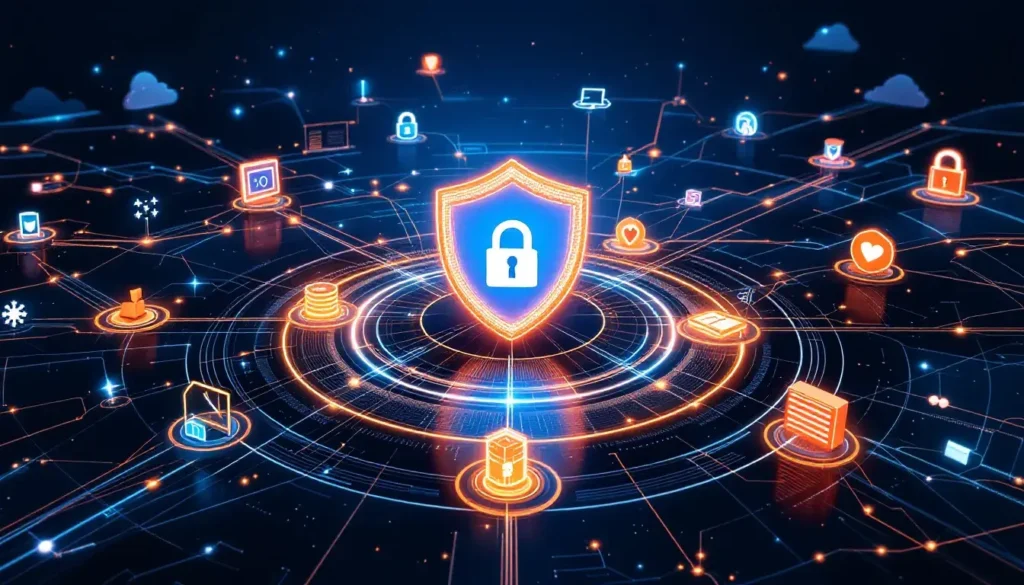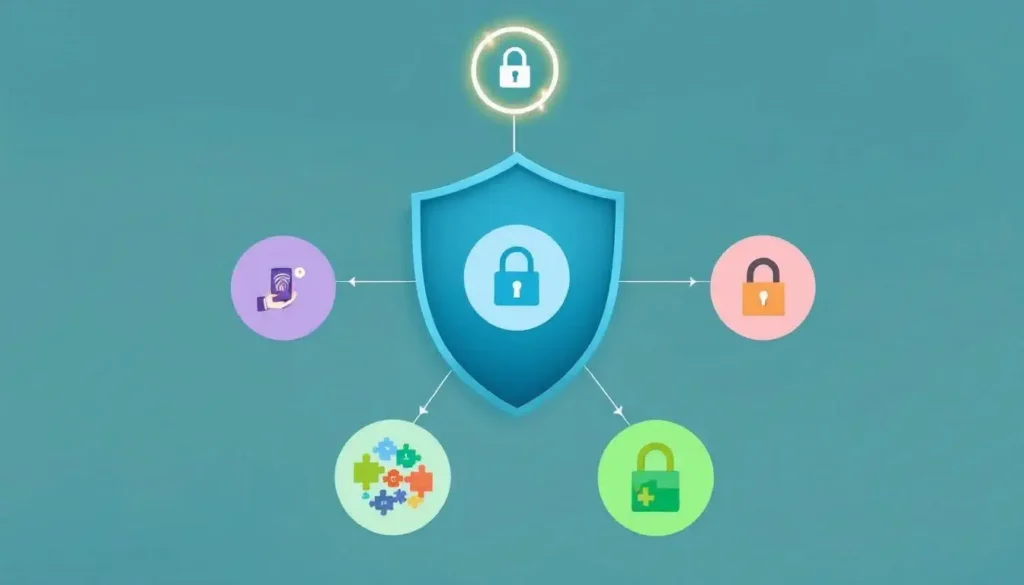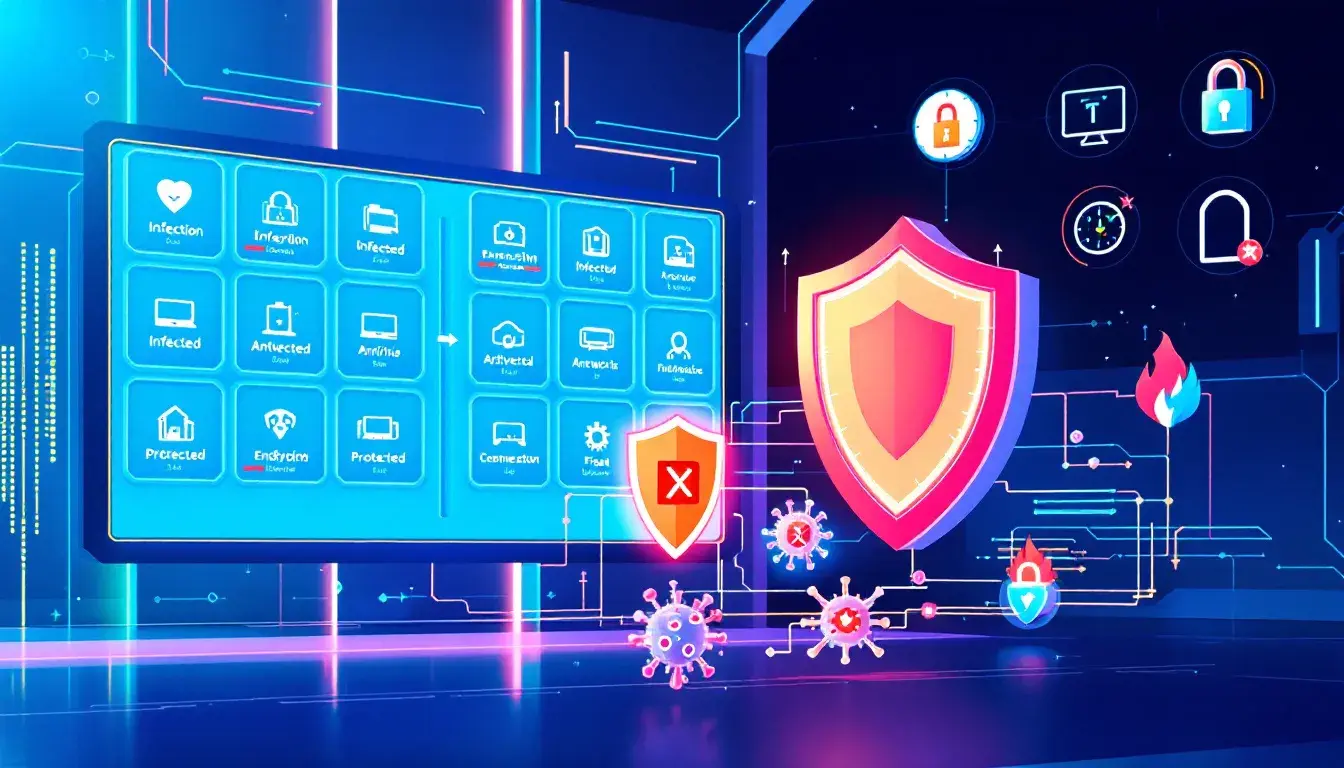What Is Endpoint Security as a Service (ESS)?
Endpoint security as a service (ESS) offers cloud-managed protection for devices like laptops and smartphones against cyber threats. With the rise in remote work and diverse devices, ESS is crucial for safeguarding sensitive data and networks.
This article explores what ESS is, how it works, and its benefits for modern organizations.
Endpoint Security as a Service in a nutshell
Endpoint Security as a Service (ESS) is increasingly recognized as a critical solution for protecting various devices against a range of cyber threats.
With the surge in remote work and the increasing use of diverse devices, the need for effective endpoint security strategies has never been more pressing.
ESS offers cloud-managed, real-time protection, ensuring that sensitive data and networks remain secure from unauthorized access. Endpoint security important for organizations aiming to safeguard their digital assets.

Traditional security approaches are often inadequate in today’s complex digital environment. ESS enables organizations to benefit from scalable, real-time protection against malware and other cyber threats, making it an indispensable part of modern security frameworks.
Leveraging cloud-managed solutions, ESS offers robust protection for devices like laptops, smartphones, and IoT, guarding them against numerous cyber risks.
How Endpoint Security as a Service operates
At its core, Endpoint Security as a Service (ESS) integrates various elements such as antivirus, firewall systems, and endpoint detection capabilities to form a comprehensive security structure.
These components work in tandem to provide a robust defense against evolving threats. An advanced endpoint security solution incorporates multiple layers of defense, ensuring that all potential vulnerabilities are covered.
Cloud-native endpoint security solutions enhance protection through remote monitoring and management via a centralized console and lightweight agents. These solutions extend protection beyond traditional network perimeters, making it possible to safeguard endpoints no matter where they are located.
The centralized management console offers detailed visibility of all endpoints, regardless of their connection to the corporate network or remote operation, providing an effective network security solution.
The integration of various security technologies within ESS ensures that endpoint activities are continuously monitored and analyzed, providing real-time threat detection and response capabilities.
This holistic approach not only protects endpoint devices but also enhances overall network security by leveraging advanced endpoint security solutions that adapt to the ever-changing threat landscape.
The growing need for Endpoint Security as a Service
The rise of remote work has significantly increased the complexity of securing endpoints that are outside traditional corporate networks.
As employees access company data from various locations and devices, the line between personal and corporate devices becomes increasingly blurred. This shift necessitates robust endpoint security solutions to protect sensitive data and maintain the integrity of enterprise networks.

For modern organizations, comprehensive endpoint security is a necessity, not just a choice. Companies must evaluate their specific security needs and potential risks to identify crucial endpoints and data types that need protection.
With cyber threats continuously evolving, maintaining effective endpoint security is paramount to safeguarding corporate data and ensuring business continuity.
Core components of Endpoint Security as a Service
ESS includes several critical components to effectively protect endpoints.
These include advanced antivirus and anti-malware software, firewalls and intrusion detection systems, and Endpoint Detection and Response (EDR) solutions.

Together, these components provide a multi-layered defense strategy designed to address the myriad of threats targeting endpoint devices.
Advanced antivirus and anti-malware software
Advanced antivirus software and anti-malware software form the backbone of any effective endpoint security solution. These tools perform real-time scans to detect and block malicious software before it can cause damage.
Utilizing these advanced security technologies significantly reduces the risk of malware infections, ensuring the integrity of endpoint devices.
These solutions provide comprehensive protection by continuously monitoring for advanced threats and employing sophisticated detection techniques.
This includes behavioral analysis and machine learning to identify and neutralize previously unknown threats, offering robust protection against a wide range of cyber threats.
Firewalls and intrusion detection systems
Firewalls and intrusion detection systems (IDS) play a crucial role in ESS by providing additional layers of defense.
Firewalls serve as barriers between trusted internal networks and untrusted external networks, filtering network traffic based on established security rules.
They determine which data packets can enter or leave a network, serving as the first line of defense against potential threats.
Intrusion Detection Systems, on the other hand, monitor network traffic for suspicious activities without directly intervening.
These systems provide real-time threat detection by analyzing network traffic patterns and identifying potential threats.
Together, firewalls and IDS enhance endpoint protection by ensuring that both incoming and outgoing traffic are meticulously monitored and controlled.
Endpoint detection and response (EDR)
Endpoint Detection and Response (EDR) solutions are pivotal in ESS, offering continuous monitoring and real-time response capabilities.
EDR tools continuously monitor endpoint activities to quickly identify and respond to security incidents, providing a proactive approach to threat detection and mitigation.
These tools utilize machine learning and behavioral analysis to detect previously unknown threats, enhancing the overall protection against sophisticated cyberattacks.
Analyzing endpoint activities in real-time allows EDR solutions to swiftly respond to detected threats with automated actions, addressing potential security incidents promptly and effectively.
Device and application control
Implementing device and application control is a critical aspect of ESS, as it minimizes the risk of malware by restricting unauthorized access to company resources.
Establishing application control policies prevents unauthorized or malicious applications from running on devices, reducing the risk of potential threats.
Network Access Control (NAC) further enhances security by ensuring that only compliant devices can connect to the network.
This control over endpoint devices and applications is essential for maintaining a secure environment, especially in scenarios where remote and personal devices are used for business purposes.
Utilizing centralized management consoles allows businesses to effectively monitor and manage connected devices, ensuring robust protection against cyber threats.
Data encryption and loss prevention
Data encryption plays a crucial role in securing sensitive information on endpoint devices.
Encryption converts readable data into an unreadable format, ensuring that unauthorized individuals cannot read it without the correct decryption key.
Utilizing various encryption methods such as AES, RSA, and TLS/SSL enhances the security of data both at rest and during transmission.

Data Loss Prevention (DLP) solutions further enforce encryption across endpoints to safeguard data, especially if devices are lost or compromised.
Integrating encryption within DLP frameworks not only helps protect sensitive information but also ensures compliance with evolving data protection regulations.
Ongoing employee training on encryption policies and practices is essential for minimizing human errors in data protection.
Educating employees on data encryption and its effective implementation significantly reduces the risk of data breaches caused by human error.
Automated patch management
Automated patch management is a key feature of ESS, enabling IT teams to deploy patches consistently and efficiently.
Automating the patching process minimizes human errors common in manual patching, such as skipping essential updates.
This automation ensures that all devices are up-to-date with the latest security patches, reducing the risk of vulnerabilities and enhancing overall device performance.
Moreover, automated patch management significantly reduces the time and resources required for IT teams, allowing them to focus on more strategic tasks.
Technicians can schedule patches conveniently, minimizing disruptions to users’ work and ensuring that security updates are applied promptly.
This proactive approach to patch management is crucial for maintaining a secure and efficient IT environment.
Key advantages of implementing Endpoint Security as a Service
One of the major advantages of implementing ESS is its advanced threat detection capabilities.
Utilizing AI and machine learning, ESS continuously monitors for threats and responds swiftly to any incidents, ensuring real-time protection for endpoint devices.
This proactive approach to security helps organizations stay ahead of evolving cyber threats.

ESS also offers significant cost efficiency by reducing the need for pricey on-site hardware and IT maintenance. With ESS, IT teams can manage all endpoints from a single cloud platform, enhancing real-time visibility and streamlined security policy enforcement.
This centralized management reduces the workload of security teams, allowing them to focus on more critical security tasks.
Additionally, ESS provides scalability, allowing businesses to easily adjust their security measures as the number of devices changes.
This flexibility is particularly beneficial for growing organizations, as it ensures that their security infrastructure can evolve in tandem with their operational needs.
Challenges in deploying Endpoint Security as a Service
Despite its many advantages, deploying ESS comes with its own set of challenges.
One significant challenge is the need for robust Bring Your Own Device (BYOD) policies to mitigate security risks presented by personal mobile devices used at work. Organizations must ensure that personal devices comply with security standards to prevent potential vulnerabilities.
Continuous monitoring and policy updates are also necessary to adapt to evolving cyber threats and maintain effective endpoint security. Security teams must stay vigilant and proactive, regularly updating their security measures to address new threats and vulnerabilities.
This ongoing effort is crucial for maintaining a secure environment and protecting sensitive data from cyber threats.
Best practices for effective ESS deployment
To deploy ESS effectively, it is essential to choose the right provider. Look for vendors that offer features like automated threat detection and advanced security solutions to ensure comprehensive protection.
Establishing clear security policies for device and data usage is also crucial for consistent application across all devices connected to the ESS.
Conducting frequent security audits helps organizations spot vulnerabilities in their endpoint security strategy. These audits should include reviews of encryption practices and key management to ensure compliance and security.
Regular employee training programs are also vital in reducing human error, which is a common cause of data breaches.
Following these best practices allows organizations to deploy ESS effectively, ensuring robust protection for endpoint devices and maintaining a secure IT environment.
Frequently asked questions
What is Endpoint Security as a Service (ESS)?
Endpoint Security as a Service (ESS) is a cloud-managed solution designed to deliver real-time protection for endpoint devices like laptops, smartphones, and IoT devices against cyber threats. By leveraging ESS, organizations can enhance their security posture and respond swiftly to emerging threats.
Why is ESS important for modern organizations?
ESS is essential for modern organizations as it provides scalable, real-time protection against malware and unauthorized access, especially amid the rise of remote work and diverse devices. This safeguarding is fundamental to maintaining operational security and productivity in today’s digital landscape.
How does ESS enhance security?
ESS enhances security by integrating multiple security technologies such as antivirus, firewalls, and EDR, creating a comprehensive defense strategy against evolving threats. This layered approach ensures more robust protection for your systems.
What are the key components of ESS?
The key components of an Endpoint Security Solution (ESS) include advanced antivirus and anti-malware software, firewalls, intrusion detection systems, and Endpoint Detection and Response (EDR) solutions. These elements work together to provide comprehensive protection against various cyber threats.
What are the challenges in deploying ESS?
Deploying Endpoint Security Solutions (ESS) presents challenges such as the necessity for robust BYOD policies and the requirement for continuous monitoring and updates to adapt to evolving cyber threats. Addressing these challenges is crucial for maintaining effective endpoint security.